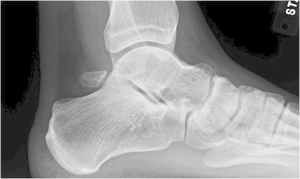
Extra bones in the foot are relatively common and can be present from birth or develop later in life. Some of the most common types of extra bones in the foot include:
- Accessory navicular: This is an extra bone that can be found on the inner side of the foot, near the ankle. It is present in about 10% of the population and can sometimes cause pain or discomfort.
- Os trigonum: This is an extra bone that can be found behind the ankle bone (talus). It is present in about 10-15% of the population and may cause pain or limited mobility in some people.
- Hallux sesamoid: These are small bones that are embedded within the tendons of the big toe. They can sometimes become irritated or inflamed, causing pain or discomfort.
- Accessory cuneiform: These are extra bones that can be found in the middle of the foot, near the arch. They are relatively uncommon but can sometimes cause pain or deformity.
- Duplicated bones: In some cases, an extra bone may develop as a duplicate of an existing bone in the foot. This can cause problems if the duplicate bone causes pressure or impinges on nearby structures.
Extra bones in the foot are usually diagnosed through X-rays or other imaging tests. Treatment depends on the type and location of the extra bone, as well as the severity of symptoms. In some cases, non-surgical treatments such as rest, ice, and physical therapy may be recommended. In more severe cases, surgery may be necessary to remove the extra bone or address any associated problems. It is important to consult with a healthcare provider if you are experiencing foot pain or have concerns about extra bones in your foot.
